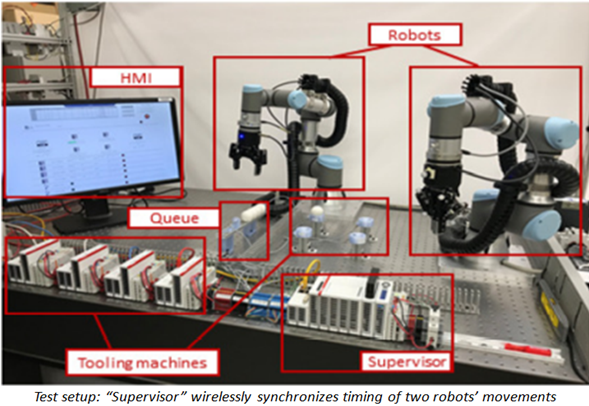
Advances in the Internet of Things and artificial intelligence are part of a new industrial revolution to make manufacturing faster, better, and cheaper. These advances depend on precisely timing the actions of systems and components involved in a manufacturing process. If such coordination could be done wirelessly, even greater benefits might be realized: flexibility, mobility, lower maintenance, and life-cycle costs. However, widely deployed wireless technologies' ability to ensure time-sensitive, low-latency, highly-reliable, and protected communications has yet to be proven.
NIST and industry researchers recently demonstrated a wireless time-sensitive networking scenario, with time synchronization and time-aware shaping scheduling features in a use case for robotics. The results were published in an article, Wireless Time-Sensitive Networking Impact on an Industrial Collaborative Robotic Workcell, in the IEEE Transactions on Industrial Informatics.
The test setup included a "supervisor" system, coordinating data flow between two robotic arms: one moved parts to a work zone for simulated tooling, while the other robotic arm was used for quality inspection of the results. Researchers measured the reliability of data transferred, latency of that transfer, and idle time for applications driving the robots. They also assessed how varying levels of interference impacted the wireless network performance.
Tests showed that latency could be limited to less than five milliseconds for 99 percent of the data packets. This latency could be further reduced by improving the implementation of wireless time- sensitive networking, notably by incorporating new time-aware scheduling concepts. In the future, researchers intend to explore time-sensitive networks, which use standards-based Wi-Fi with newer features and new time-aware scheduling concepts.

